Deficiency of Conventional-planning
Classical planning, where a plan authority has fixed objectives and “steers” a society towards these objectives following a predetermined program, is no longer feasible. … “Most industrial countries have become actually ungovernable, and authorities, instead of being able to think about planning, can do nothing else about accept ongoing trends and seek ways to avoid conflicts and eliminate obstacles before the ongoing processes, classical planning, consisting in the orientation of processes or even in resistance to them, has had to be desperately given up”. [1]
Constant Nieuwenhuys believed that, above all else, living space needed to correspond with the individual needs and desires of its occupants. In comparison, the modernist heavy-handed approach to housing projects, driven by economic and functional rationalism, neglects individuality and favored uniformity with the mass production of identical units and the creation of machines for living.
To elaborate, under a capitalist system, planning inevitably leads to hierarchical and fragmented functions. In the absence of concern for the actual day-to-day life of real inhabitants, these spaces are homogenized and abstracted for the sole purpose of planned commodity consumption.
Non-planning and Self-planning/Self-building
The impact of ‘non-planning’ upon mainstream construction in the 1960s, which represented a subtle shift in the modernist paradigm, was first on brought by John. F.C. Turner on the emerging social movement of squatters in Latin America who desired a free and revolutionary living style.
Social divisions and hierarchies were rejected by the squatters but not by the planners who wanted to save their professional role. The non-planners also shared this desire of keeping intact the division between those who build and the consumers who would use the building. The squatters were the first to declare the notion of self-planning, that they were not against the notion of planning itself but were against those who planned for them. “The division between architects and planners on one side, and the building’s users on the other, was questioned through the radical squatters’ self-building projects and participatory democratic decision-making”. [2]
At the same time, Constant believed that the best strategy for planning was to repair fractured existence and restore the artistic and poetic qualities of people’s lives. Resisting separation between these activities: people and ambiences – the core idea of unitary urbanism – and created places for meeting and sociability, Constant emphasized nomadism, flexibility and environmental variety as the most important elements conceived during the planning process.
Therefore, the increasing complexity of everyday life implies the need for another way of living. It implies the right to create another social experience, another social time, another way of existing, and another way of ‘planning’. The impossible is attained through the idea practical utopias.
After that, the 1970s witnessed increasing support for the authority of grass-roots individual action. “Do it yourself ” became a national pastime, and a lucrative retail market in materials and equipment was established. In a small but socially important way people were taking control of their own domestic environments. “Yet what both shared was a commitment to the individual and collective engagement of people and communities in the creation of their own environments, rather than delegated and indirect actions of official planners and architects”. [3]
Compared to Anarchy, Non-plan was certainly libertarian. Anarchism is more properly understood as a doctrine advocating the abolition of the State. In contrast, non-plan projects tended to reform the government of space rather than to abolish it.‘Anarchy’ is a word commonly understood as a state (condition) of disorder due to absence or non-recognition of authority; it is the absence of government and absolute freedom of the individual. Planning in Anarchy should be based on specific anarchistic premises; while Non-plan was a device precisely used to manage the forces of change. “Paradoxically, the free-market libertarianism of ‘Non-plan’ came attendant in New Society and Architectural Design with several pages outlining the procedures necessary for the implementation of non-plan, and went on to project outcomes”. [4]
Self-decision-making by Flatwriter
Yona Friedman believes that it is impossible for architects to study the behavior and preferences of every individual user, so architects cannot make the appropriate decision for each client. By conventional means, the architect usually constructs an ideal user, which is normally a mirror image of the architect, and then plans according to this ideal. That is to say that the architect cannot possibly ascertain their preferences and therefore should not presume to choose for the clients; instead, the architects should devise methods of promoting choice among the users themselves.
Consequently, there needs to be a notion of ‘self-decision’, which is possible for individuals to express his or her preferences, no matter how irrational it may be perceived. The individuals must also be apprised of the attendant risks and dangers, and afterward, the group will evaluate how the entire sequence and organization could be affected by the choices from its members.
Some sorts of neutral methods, or mediatorial organization, which could perfectly solve the individual’s desirability, need to be pushed out. Then, during the 1970s, Yona Friedman conceived an idea called “Flatwriter”, which is an application of a new information process between the future user and the object to be used. It makes individual decision-making possible within very wide boundaries while also provides a way for anyone to self-correct errors without the need for intermediary professionals.
Firstly, there should be a pre-existing infrastructure as a skeleton – an empty construction with several floors. Yona Friedman uses a keyboard consisting of 53 keys, each printing the figure shown upon it. All of these choices are predicated by a framework of existing stocks of prefabricated elements, service units, bathroom and kitchen units, and the location of each within the house structure. When one makes a decision about the house aesthetics, the Flatwriter would not give any critique on the result; however, it would estimate whether the chosen site would conflict with any others, and it would also calculate the total price of the chosen house. All of the selections are made by simple keys which are easily comprehended by the constructor as well as other residents of the future neighborhood.
Just as what Yona Friedman said himself: “The Flatwriter makes it possible, in the planning stage, for any future resident of a town (infrastructure): (a) to choose the plan and character of his apartment – his private environment – (an act that today is practiced by the architect), (b) to choose the site of his private environment within the town – public environment – and get a building permit instantaneously (an act that today is supposed to be done by the local municipal authority) and, (c) to be informed about the particular issues concerning himself directly, himself and his home, issues implied by any new event (intervention) anywhere within the town (an act that today is omitted).” [5]
For Yona Friedman, the Flatwriter is neither a language with grammar, nor a computer with software, nor a system of poetic designs. The only requirement is that of the individual user who writes whatever he or she sees fit.
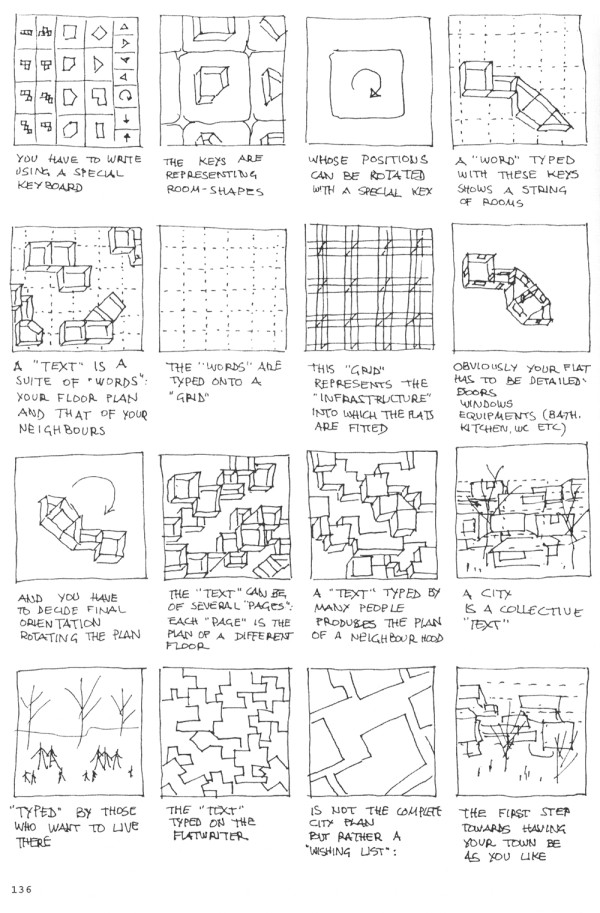
Flatwriter concept, Yona Friedman, 1971
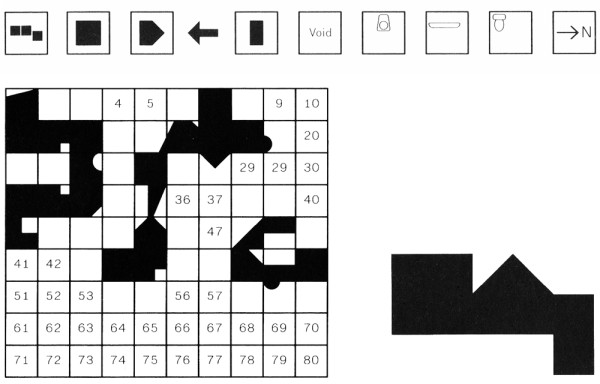
Flatwriter, Yona Friedman, 1971
Almere Homerus-OMA
Similar things happened in the Netherlands almost 35 years after Yona Friedman’s Flatwriter. In 2007, the Almere Homerus project by OMA was commissioned by Almere Stad.
Almere was built on reclaimed land in 1976; it is a new town that has been designed from scratch; on the basis of an empty, open field. The city was originally planned as a solution for housing shortages in the western provinces of the Netherlands, particularly for the city of Amsterdam. However, the situation changes these years. After 30 years of development, Almere becomes a lively city with real urban quality, and to correspond with the development of economy and social organization, the city is going to change into a green, sustainable city with more freedom for the inhabitants. In the other words, urban planning and design has become the most distinct feature and identity of this town.
The project of Almere Homerus consists of a mixed-use master plan with different housing typologies, industrial areas, and the addition of a commercial core. The urban scheme follows the tram circuit and main transport network. It is uncertain whether the original idea of the circle came from the prototype of Garden City by Howard or the beautiful, utopian perspective of OMA, but it is certain that the architects were trying to simulate the traditional canal zone in Amsterdam; an irrigation system consisting of a network of creek-streets which collect precipitation and thus guides it to the inner canal network. The water purification and treatment is implemented passively throughout the establishment of flora and grass along the streets.
The housing scheme allows for a variety of typologies and building codes, which augment the morphological urbanity and social diversity of its dwellers. When the project was implemented, the plots were sub-divided into smaller parts – approximately 2000 pieces, and the government encouraged immigrants to build houses themselves. That is to say, the master plan made by OMA is just a skeleton while the local government only offers infrastructure such as road networks, energy grids, canal systems and the Greenland. Actually, early in the 1960s, the most influential writer on housing, John F.C. Turner had already proposed the similar idea in Peru and later in 1970s, he convinced the world bank to initiate major site-and-service project of self-help.
Although the plot prices are connected to the market, the local government tries their best to abandon the conventional market planning strategy in this residential area. Instead, the local government makes it accessible for residents to build houses themselves, with no restrictions on orientation, floor plan, building style, color, etc. It is a great progress comparing to the contemporary housing condition in the Netherlands, which is highly controlled, under top down planning, and almost no self-builders existing.
It’s a self-building project without regulation; the local government never asks residents to do something or to not do something, and residents are permitted to build in any style that they want. But there are also some promotions made by the government. Although not compulsory, some conditions exist that residents may freely choose to adhere to. Examples of voluntary conditions are such as “I want to build with woods”, “ I want to build near the canal”. Architects are often involved in these processes if asked by the residents.
When asked the question of how to organize such a large area without a specific master plan, Councilor Adri Duivesteijn said: “People are positive here, we don’t need to do anything, we just let them growing with the initiate from people themselves, from the deeper desire inside of themselves, about the creation of community and the responsibility of being resident in Almere Homerus.” [6]
The Almere Homerus mode is a pioneer amongst residential area development strategies. It depicts a free and harmonious society with people living in the house made by their own doing. However, it’s not a completely self-planning paradigm; the architects still made the generic master plan by traditional means. Whether using the metaphor of utopia or not, people are building houses on their plot of land purchased from the government. Sometimes the inhabitants build the houses themselves, sometimes architects are also involved as representatives. Under these conditions, it appears to have the characteristics of an ancient period rather than fully democratic social order. Although fun for the local residents to enjoy the do-it-yourself applications with their friends and family, these notions have nothing to do with the criticism and proposal of contemporary architecture and urban design. It is a program far from self-planning.
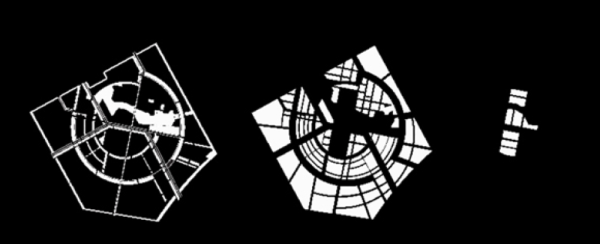
diagram for Almere homerus
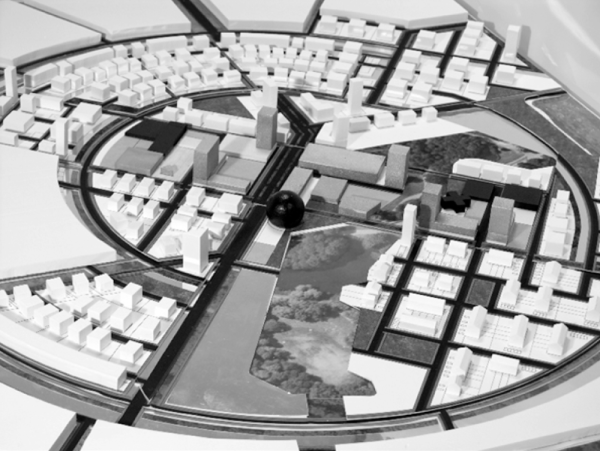
model of Almere Homerus
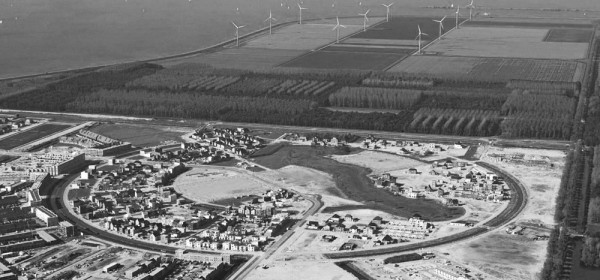
Almere Homerus
Almere Oosterwold- MVRDV
There is another urban design project called Almere 2.0 in Almere Oosterwold by MVRDV last year. In comparison to Almere Homerus, the Almere Oosterwoldoption completely inherited Yona Friedman’s idea of self-decision.
In just over a few decades Almere has attracted over 193,000 residents and 14,500 businesses and has become one of the four main cities in the Amsterdam Metropolitan. The Draft Strategic Vision Almere 2.0 was designed to accommodate this growth; for instance, Almere Oosterwold is planed for the reservation of further development up until 2030.
‘Cultivate diversity’ is one of the most essential guidelines among the Almere Principles. More variation in housing styles, employment opportunities and composition of the city’s population is crucial in breaking with the current homogeneity. New districts will have their own distinct identities and will complement the existing districts. To reinforce this ‘ diversity’, MVRDV imported the idea of ‘self-decision’, that future inhabitants have the capability to choose the location of site as well as the area and shape under some pre-existing fundamental boundaries, such as roads, rivers, populations and multi-centers of the area’s entirety. The architects make a list of parameters like scale, shape, location, etc. for defining the plot. Future residents can then locate their plots specifically by the requirement of the environment; a square plot at the junction of two roads, a cross plot near the boundary of the site, a polygon plot with a long side adjacent to the river, etc.
The condition is a dynamic corresponding to the results of remaining space; constantly updating and revising itself as the land decreases in size. There are also no pre-planned secondary roads; the sub-road system and pedestrian system emerging only after most of the land has been chosen by future inhabitants. Furthermore, the definition of this site is not only a self-decision place, but also a self-sufficient area. Inhabitants with larger plots of land could produce food by agriculture and the raising livestock, and also produce energy with the usage of windmills.
Unlike the surrealistic and romantic thinking of Yona Friedman, who uses mega-structures as the skeleton, MVRDV chooses a more realistic path in order to create a framework of self-decision. By using the infrastructure as the skeleton, there is greater ease in convincing people to the benefits of such a system from mega structure to self-planned roads. Almere Oosterwold is not the first time MVRDV has experimented with the concept of self-planning. In 2007, for the Guangming Park competition in Shezhen, China, a similar idea was delivered with the invention of a software. After inputting the requirements (area, location, environment, etc.) into the computer, the software would then calculate all of the possible plots and shapes automatically in order meet the requirements. Amendments were then updated from the initial conditions for the next input in accordance with the completed choice. Ironically, although Yona Friedman insists that the Flatwriter is a direct combination of form and function selected by users from visualized icons rather than an intelligence software, MVRDV was able to develop the methodology with the help of computer as a great leap forward after borrowing from the same idea. With these discoveries, it is today much more possible for the urban design of Almere Oosterwold to be realized.
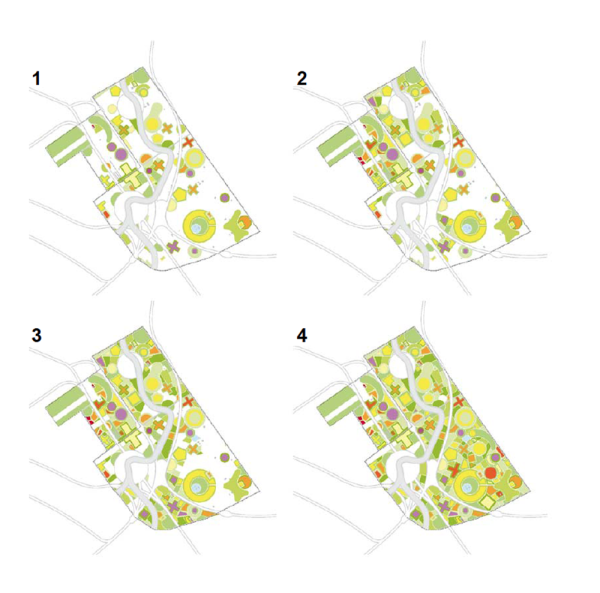
Planning of Almere2030, MVRDV
The architects did not tell us how to utilize the land much more efficiently or how to balance different conflicting requirements at the same time. However, this logic of urban design minimizes the hierarchy implementation in the planning procedure and gives the maximum freedom to the future inhabitants by letting them make choices for themselves. Although ‘Freedom’ always has its limitations, these limitations are not implicit rules but simple conventions between two partners. Recently, accompanied by the growing voice of individuality and pure libertarianism, bottom-up organization is an increasingly evident tendency both in urban planning and social organization. At the same time, with the development of mass standard production, self-building also becomes more and more popular and easier for today’s inhabitants.
In a radical parlance, there is no real urban planning today, what we have instead is an ensemble of techniques for integrating people. As MVRDV emphasize, “ever since modernism all architects have felt obliged to design the ideal house. But is there such a thing in a ideal location? … There is no longer any ideal home: there are thousands of ideal homes”. [7]
Reference
[1] Yona Friedman, The Quaternary, Actar, Yona Friedman Pro Demo, 2006, P159.
[2] Ben Franks: New Right/ New Left, Non-Plan, Architectural Press, 2007, P41.
[3] Jonathan Hughes: After Non-Plan, Non-Plan, Architectural Press, 2007, P177.
[4] Banham Barker, Hall and Price, p438, and Cedric Price, Non-plan, Architectural Design, 1969, P269.
[5] Yona Friedman, The Flatwriter: choice by computer, Yona Friedman Pro Demo, Actar, 2006, P130.
[6] From a lecture by Adri Duivesteijn, 2011, Almere.
[7] Description of the Berlin Voids project, MVRDV, 1991.